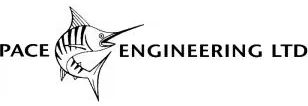The Challenge
With the mandated sunset of their Q-Base system, a local QMS based on ISO 9001:1994, in 2019, Pace Engineering was forced to transition to ISO 9001:2015. For them, it wasn't just a technical update – it was a cultural shift that threatened to disrupt a decade of hard-won operational rhythms.
Disrupting Deep-Rooted Habits: The challenge wasn't building from scratch, but translating a familiar, trusted system into a new framework without losing the simplicity that made it effective on the workshop floor.
Fixing Inefficiencies: Process inefficiencies in production and administration, once tolerated under Q-Base, now demanded solutions that respected their engineering ethos.
Ensuring Continuity: This complex transition had to happen without disrupting ongoing critical projects, all while navigating the uncertainties of the COVID-19 pandemic.
We knew we could do it by ourselves with the right tools. Nobody knows our business like we do.
Steve Day
Managing Director
Pace Engineering
The Solution
As a company that prides itself on internal expertise, hiring consultants was never the plan. Pace Engineering needed a solution that respected their culture of self-reliance and their hands-on approach. After extensive research, they found the perfect fit: the 9001Simplified ISO 9001 Certification Toolkit:
Pragmatic Approach: The comprehensive DIY framework bridged the gap between Q-Base's practicality and ISO 9001's rigor without bureaucratic bloat.
Efficient Customization: Ready-to-use templates for machining tolerances and equipment logs mirrored their real workflows, allowing them to focus on implementation, not translation.
The Certification Toolkit was user friendly and easy to interface with our previous program. There was very good information in the kit, including the user guide.
Warren Osborne
Senior Project Manager
Pace Engineering
The Implementation Phase
Launching in January 2020, the lean implementation team, consisting of Senior Project Manager Warren Osborne and a colleague, faced a skeptical workshop. Their team was deeply fluent in Q-Base's pragmatic Kiwi approach, and the shift to ISO 9001 felt like learning a new language. Their first win was using the toolkit's embedded training – it translated the complex standard into their language, turning initial skepticism into understanding across the entire team.
The real test came in application. Warren and his partner became translators, using the toolkit's templates to carefully convert a decade of Q-Base habits into ISO-compliant processes. They battled the "this is how we've always done it" mentality by proving each new procedure's worth on the workshop floor.
When COVID-19 hit, the toolkit's digital format and clear instructions became their lifeline, allowing them to maintain momentum through lockdowns. The secret, as Warren explained, was that "the toolkit spoke our language." Pre-loaded checklists and instructions allowed them to self-guide, needing their assigned consultant only briefly.
The team, once skeptical, began actively shaping the system, suggesting improvements. "Our people shaped the system to fit our workflows," Warren noted. The project had transformed from a compliance task into a shared mission.
We were surprised at how easy it was to implement the 9001Simplified system and gain the certification we were after. It took us less than 9 months to achieve certification and was manageable with two of us engaged in the implementation.
Warren Osborne
Senior Project Manager
Pace Engineering
The Certification Audit
By October 2020, Pace Engineering was ready for their ultimate test: a rigorous two-day certification review by Telarc. The outcome was a resounding success. The auditor identified only two minor nonconformities – a notable achievement for a legacy-system transition – and noted seven opportunities for improvement, which the team embraced as a roadmap for growth.
Their QMS was praised as "comprehensive yet tailored," proving they had put operational reality before paperwork.
We proved that with the right tools, small teams can outpace consultancies. This wasn't just certification – it was ownership.
Warren Osborne
Senior Project Manager
Pace Engineering
Keys to Success
We asked Warren for tips or lessons learned for other companies when reflecting on his experience transforming Pace from Q-Base to ISO 9001.
"Set goals beyond the certificate"
Instead of treating certification merely as a means to gaining marketing benefits or meeting customer mandates, Warren suggests to develop a list of practical, operational goals. "If you need to get ISO certified, you might as well take advantage, improve your operations and increase efficiencies," Warren recommends. For Pace, this gave the project a tangible, internal value that everyone could rally behind, making it about more than just compliance.
"Challenge the 'how we've always done it' mindset"
"Resistance to change is natural, but overcoming it is a necessity if you want to succeed with ISO," reminds us Warren. The toolkit is a comprehensive solution to successfully implement changes but when asked to pinpoint a single feature, Warren highlighted the included online course for managers. "It gave our managers the understanding on how to improve their work processes from a new perspective."
The Results
For Pace Engineering, ISO 9001 was never about fixing what was broken ‐ it was about improving what already worked and demonstrating their quality commitment to clients, even when it wasn't explicitly demanded.
The new system delivered immediate value. They eliminated long-standing friction by streamlining production and administrative processes, creating a more effective system that retained the practical simplicity that had been working so well for them.
Culturally, the team embraced a "smarter, sharper" operational mindset, proactively seeking improvements. This shift, combined with newly documented workflows, provided stronger risk mitigation to future-proof the business.
ISO became our framework for doing what we've always done – just better. It's not a system we maintain; it's how we now think.
Steve Day
Managing Director
Pace Engineering
Ready to Replicate This Success?
Pace Engineering proved that a hands-on team can seamlessly transition from a legacy system to ISO 9001, achieving greater efficiency and resilience.

Pace Engineering Ltd.
85-95 Katere Road, Fitzroy, New Plymouth, 4341 New Zealand
https://www.paceengineering.co.nz